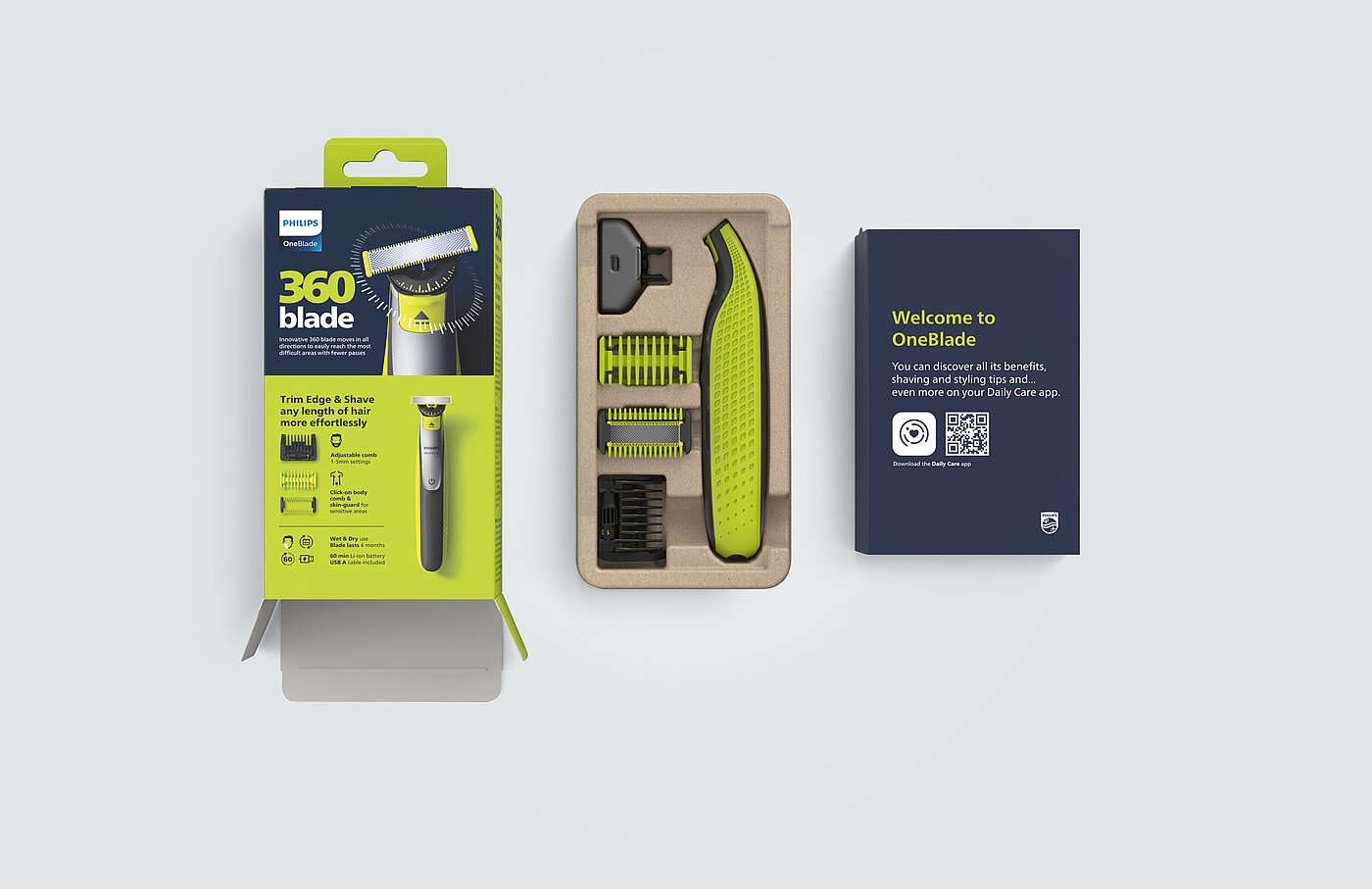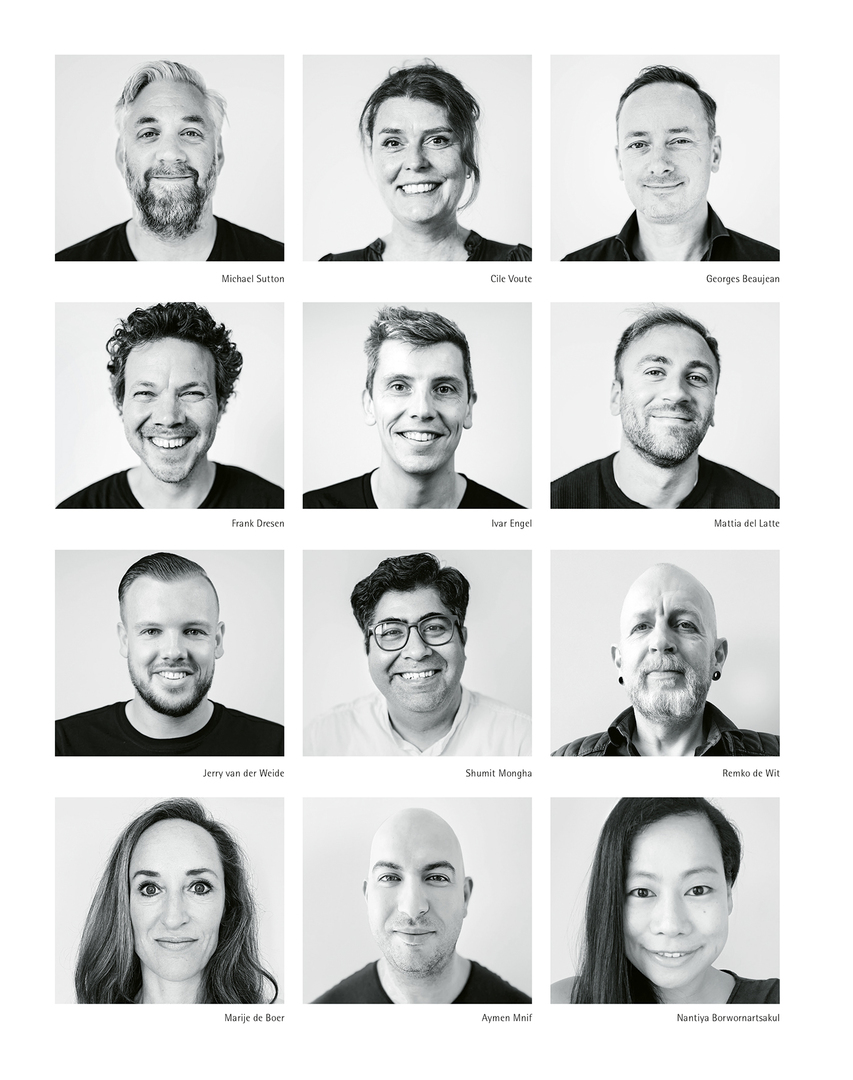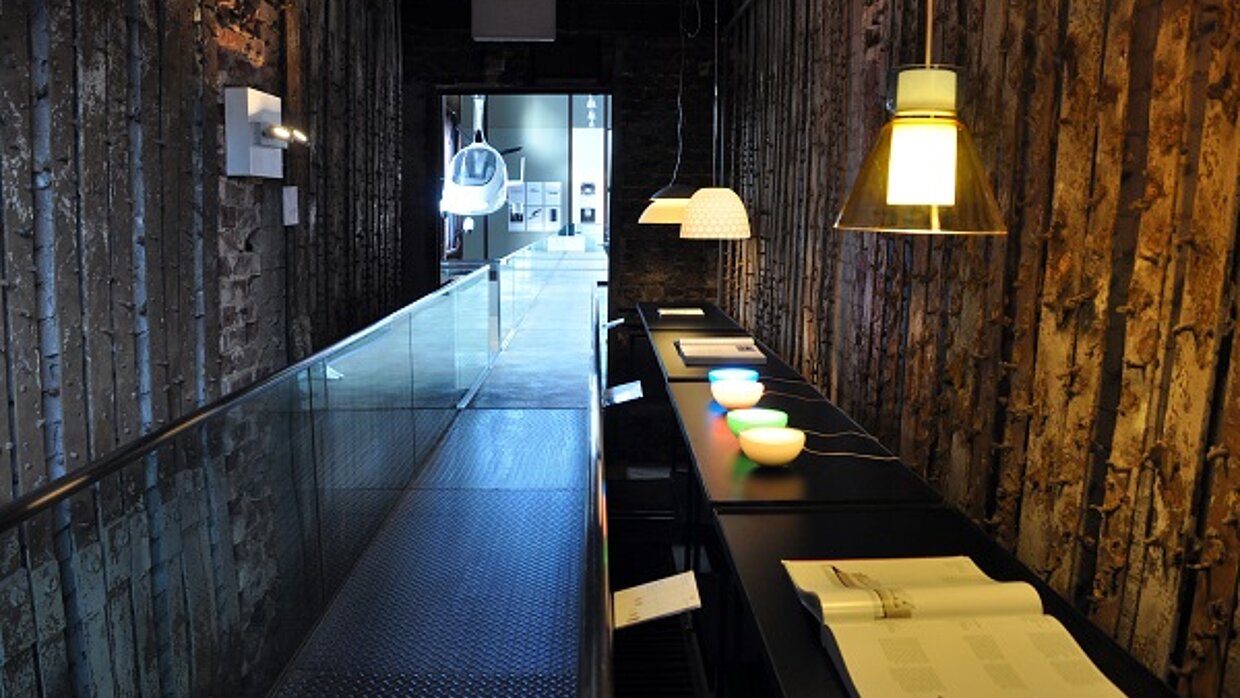![[Translate to English:] [Translate to English:]](/fileadmin/_processed_/3/f/csm_04-DP00699-2023BC_PHILIPS_abee94602d.jpg)
More than 600 creatives in ten studios worldwide work in the Philips Experience Design Team to merge both the product language and the visual communication of the company into a holistic brand experience. From early on, the focus has been on the aspect of sustainability – which is also reflected in OneBlade.
Interview with Philips Experience Design | Philips Structural Packaging Design
Red Dot: Does “less is more” apply to packaging today more than ever?
Philips Experience Design | Philips Structural Packaging Design: Definitely. With sustainability challenges to be overcome, it is becoming increasingly important to use less material. That’s why at OneBlade we set ourselves the goal of making the packaging as compact as possible and keeping the number of parts used to a minimum. This was a challenge because we were more limited in our choice of materials to achieve completely plastic-free packaging.
Does sustainable packaging design also mean that it can be easily adapted for different products?
Good question. The OneBlade packaging solution is one of the foundations of our endeavour to create a packaging platform. It has always been our intention to extend this sustainable, plastic-free approach to other categories. However, different product shapes, weights and materials require differentiated solutions in the context of plastic-free packaging – solutions that are becoming more sophisticated by the day. So it’s an exciting journey for all teams involved in packaging design!
Philips has set itself the goal of producing exclusively plastic-free packaging by 2025. Are all the technical prerequisites for this already in place?
This is an ongoing process. Although the development of the plastic-free platform mentioned above has already provided many insights and represents a great starting point, we are constantly on the lookout for improvements.
With new and more environmentally friendly solutions coming to market every day, we see many opportunities to expand plastic-free packaging to different price ranges, designs and market segments.
Plastic is largely being replaced by paper. What are the pitfalls here?
Compared to plastics, paper has its limitations. For example, paper trays cannot have undercuts, which sometimes means that several parts are needed to fulfil the same function. Furthermore, it is difficult to tune the colouring in the production process, which limits the possibilities of expression. In addition, there are no transparent solutions yet for the production of window boxes that are on par with those made of plastic.
Graphically, OneBlade is very clear, explanatory and reduced. Is this also a trend?
Less is more – yes, that’s a trend we’re capitalising on. We’ve discovered that our new packaging structure provides a great foundation for allowing our signature OneBlade identity to stand out – on the shelf and online. During the development phase, extensive consumer research confirmed that a minimum of well-placed and designed elements facilitates navigation and increases preference.


![[Translate to English:] [Translate to English:]](/fileadmin/_processed_/f/f/csm_17-03951-2023BC.230906_02_CO_Kopie_2128e07fc2.jpg)
